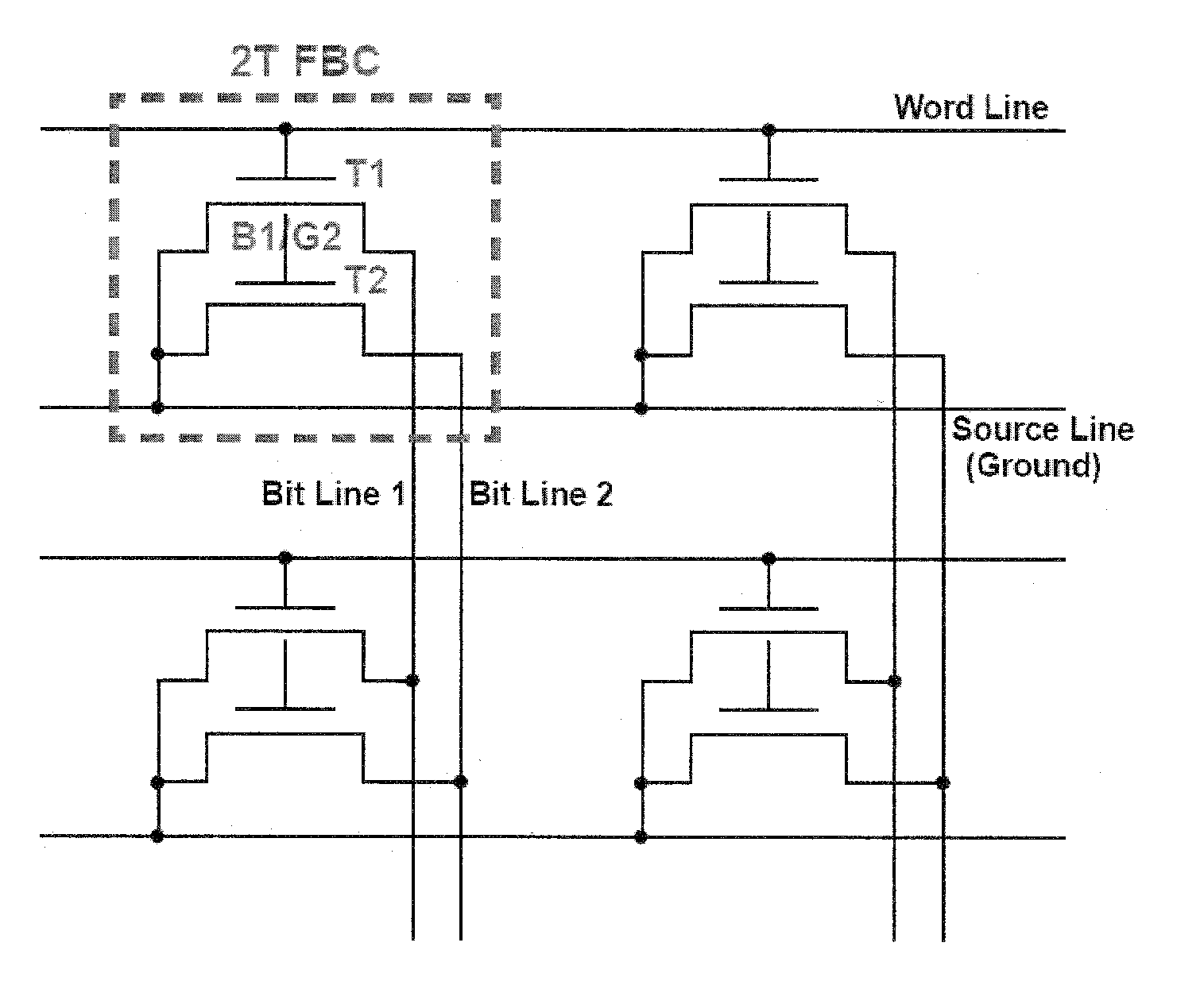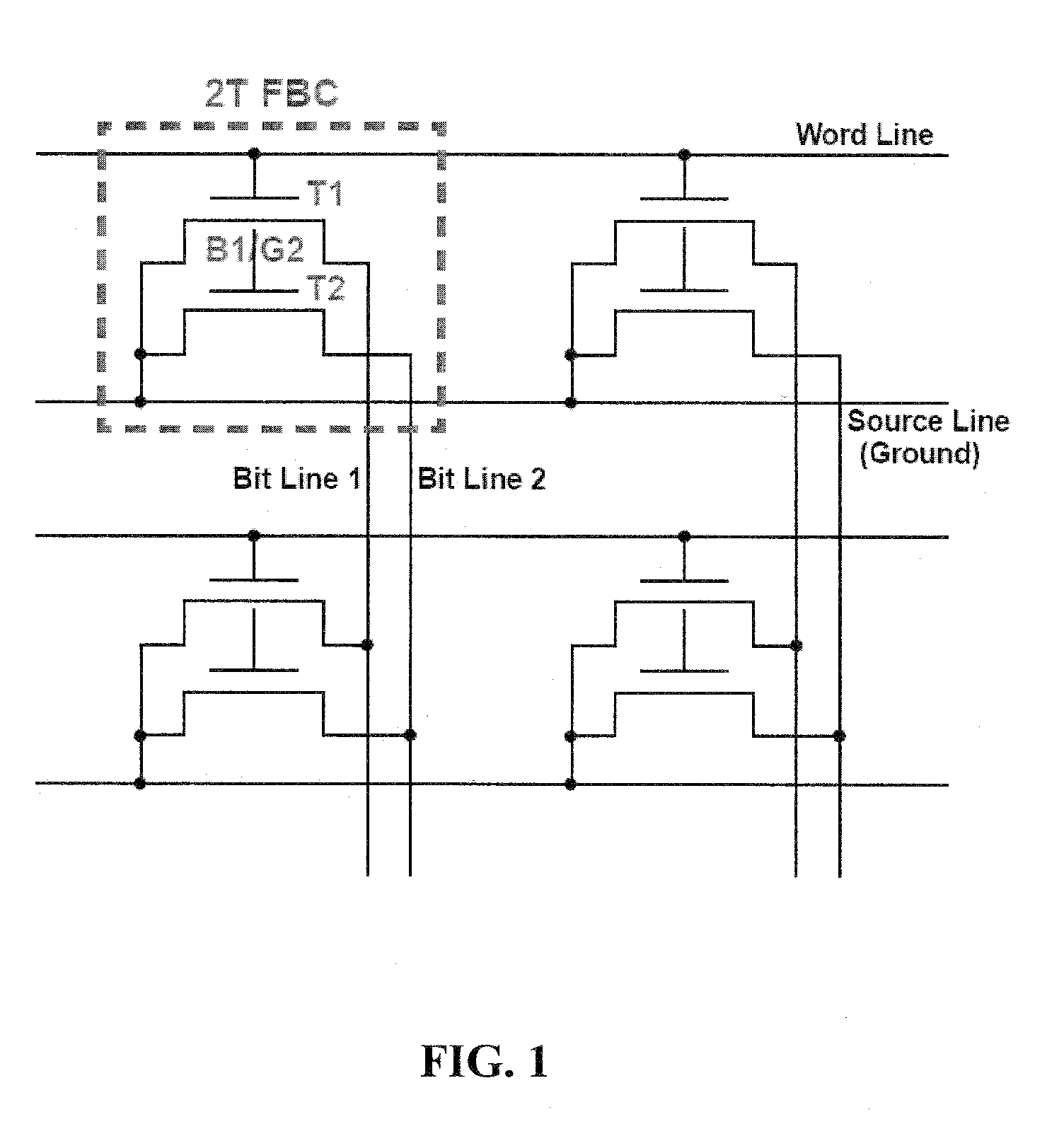Two-Transistor Floating-Body Dynamic Memory Cell
a dynamic memory cell and floating-body technology, applied in digital storage, instruments, semiconductor devices, etc., can solve the problems of affecting the scalability and performance affecting the scalability of the memory cell, so as to improve the scalability and performance
- Summary
- Abstract
- Description
- Claims
- Application Information
AI Technical Summary
Benefits of technology
Problems solved by technology
Method used
Image
Examples
Embodiment Construction
[0030]Embodiments of the present invention relate to memory. Embodiments of the subject technology provide a two-transistor floating-body cell for DRAM applications. An embodiment can involve a memory cell including a first transistor (T1) and a second transistor (T2), where the body (B1) of T1 is connected to the gate (G2) of T2. In operation, write / erase operations involve charging / discharging T1 and read operations involve reading T2. Three signal lines can be used: a word line, a first bit line, and a second bit line. In an embodiment, one bit line connects all drain nodes of the T1 transistors in a column of a DRAM array for programming the cells, and the second bit line connects all drain nodes of the T2 transistors in the column for sensing the data. The gate of T1 is tied to the word line.
[0031]In one embodiment, the source of T1 and the source of T2 are tied to ground. This embodiment can be referred to as a two-transistor floating body cell (2T-FBC). In another embodiment,...
PUM
 Login to View More
Login to View More Abstract
Description
Claims
Application Information
 Login to View More
Login to View More - R&D
- Intellectual Property
- Life Sciences
- Materials
- Tech Scout
- Unparalleled Data Quality
- Higher Quality Content
- 60% Fewer Hallucinations
Browse by: Latest US Patents, China's latest patents, Technical Efficacy Thesaurus, Application Domain, Technology Topic, Popular Technical Reports.
© 2025 PatSnap. All rights reserved.Legal|Privacy policy|Modern Slavery Act Transparency Statement|Sitemap|About US| Contact US: help@patsnap.com



